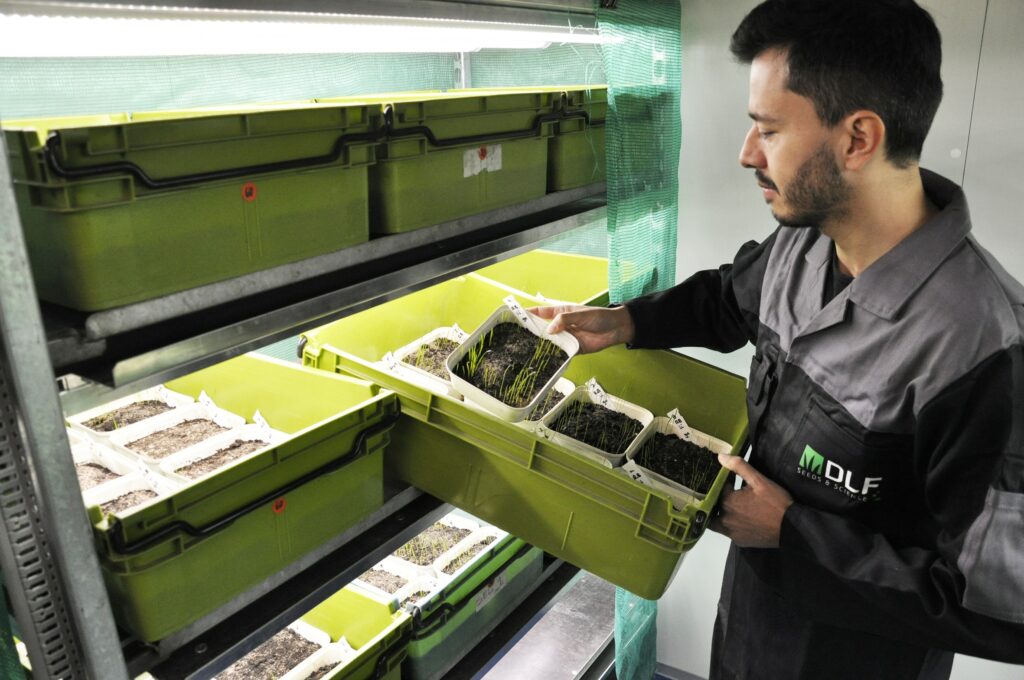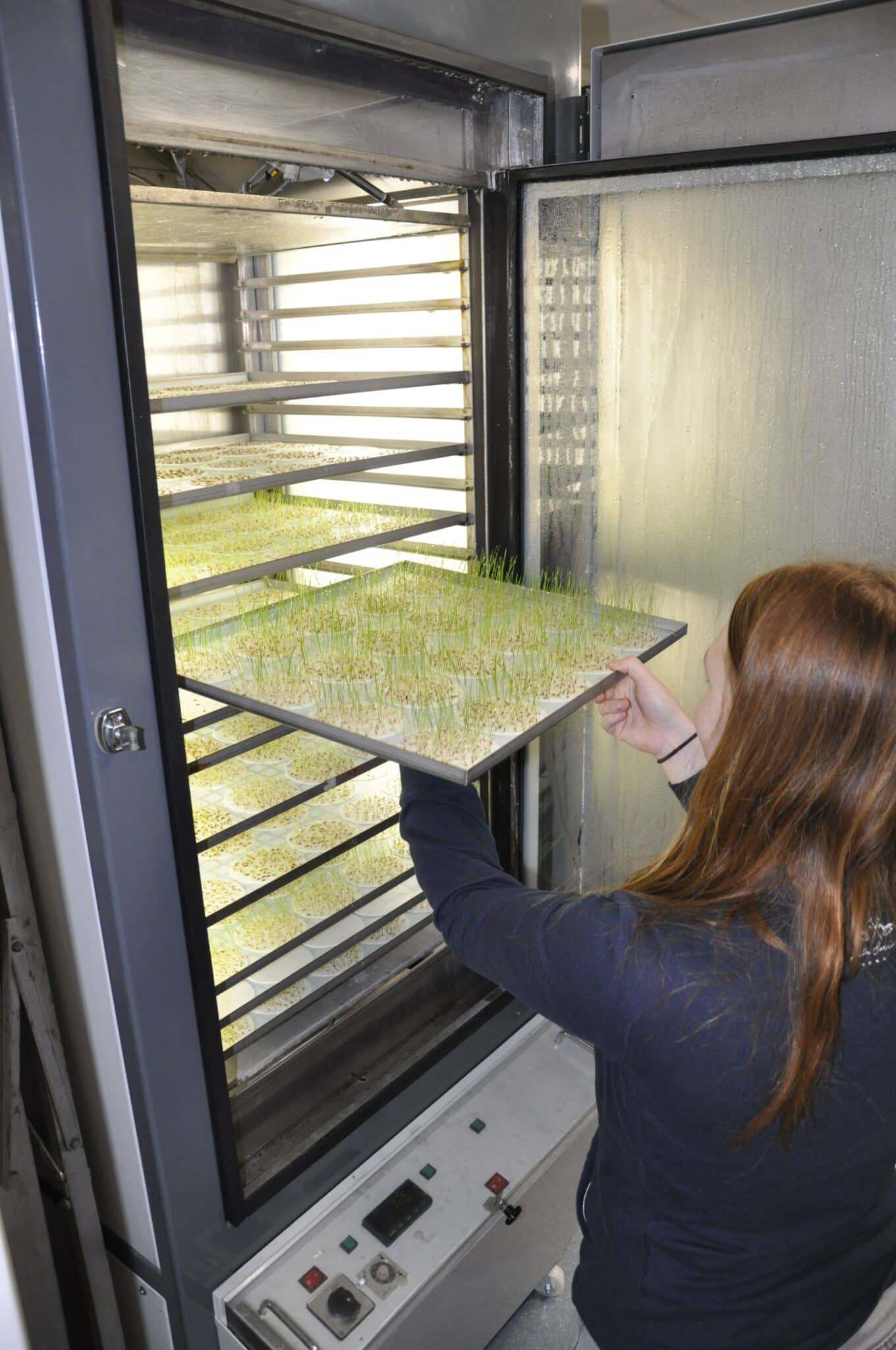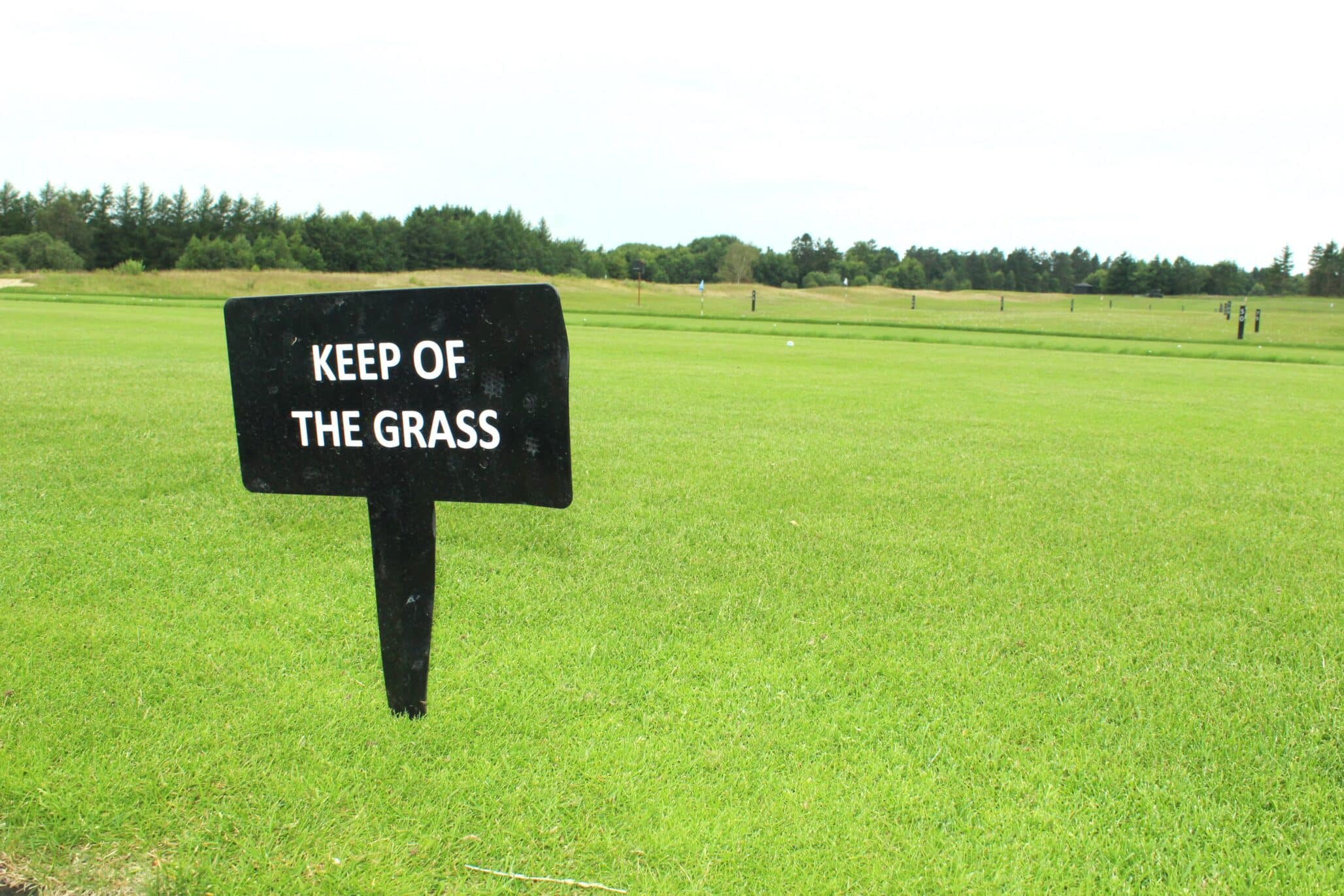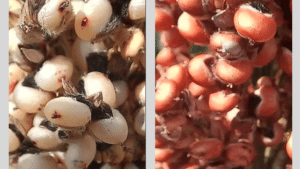…said the tiny little red fescue seed while gazing upon its neighbor seed, a similar type but dressed up from head to toe in a shiny green attire comprising a gorgeous mix of fertilizers, wetting agents, and solubilizing microbes.
“True in every aspect, dear” answered the green darling; “but why not charge your potential with a little kick? Don’t be fooled; it’s a dark and tough path to reach the surface and not everyone is going to make it.”.
And that’s absolutely true. Although we strive to push germination rates to the maximum both genetically and by careful seed handling there will always be few seeds that never turn into anything and some that only turn into weak germs. The diversity of seed bed conditions is simply too large to ensure 100% germination at all times. But it is also true that one way to maximize crop setoff is to dress the seeds up with a nice little enhancement outfit as described above.
This idea is really not new at all in the seed industry, although the usage in grasses has not been overly high. General low margins on grass seed prices has made it difficult to justify expenses to any extra treatment, which some may regard as superfluous when you “just remember to do things right” the first time. But the truth is that treated grass seeds is used – and loved by exactly those well-prepared professionals who cannot risk not to do an establishment right the first time. Establishment time is money. Go to some of the biggest football club and take a close look at their awesome training pitches – sown with ProNitro treated perennial ryegrass which gives them confidence that it is ready to roll in less than five weeks!
Why do they choose to pay almost double the normal seed price? Because they do not want to compromise; because they adore the sight of uniform germination; and because they know that while soil- and water conditions may change, the best you can do is to raise your odds by all means. I would do the same.
It saves time too – you apply seed and fertilizer in one go. Because fertilizer is placed in so close proximity to the germinating embryo you and the environment may save up to 50% fertilizer at the first application. The purpose of wetting agents, which today comes along in several products, is to break natural soil hydrophobicity and allow irrigation to reach the seed faster. That works too, and what is left for the dress is the big jungle of biostimulants, which is conditioned by interactions with trillions of other microbes and their interacting host (grass). DLF is determined to expand its knowledge here and in a market where chemicals are becoming less attractive, hopefully we will be able to dress our seeds up with good and sustainable solutions that can expose what real potential is hidden under the green skin.









